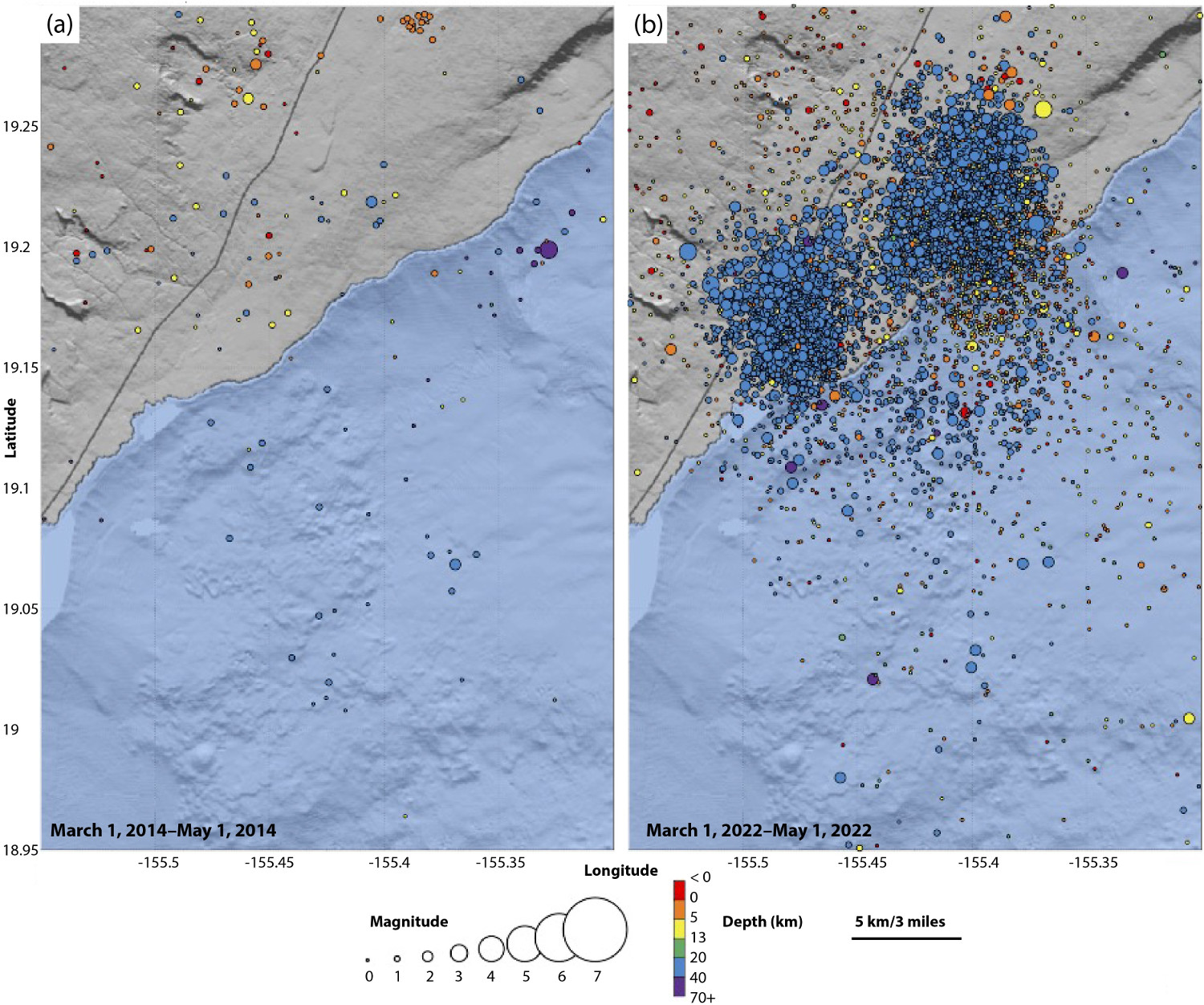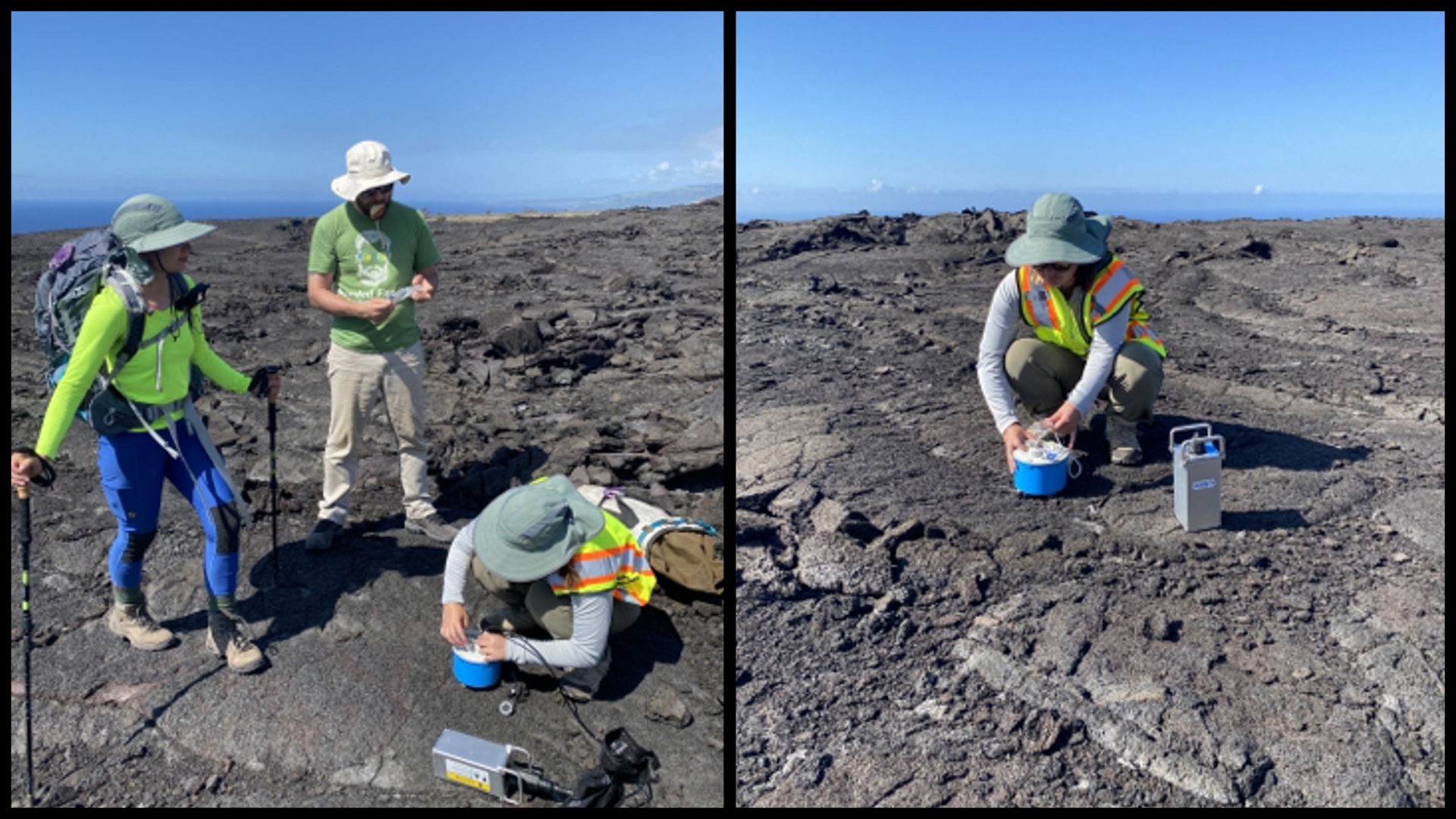(BIVN) – Seismic nodes are being deployed on the Southwest Rift Zone of Kīlauea volcano on Hawaiʻi island, where a swarm of deep earthquakes has been ongoing since 2015.
The USGS Hawaiian Volcano Observatory recently shared photos showing staff, along with collaborators from the University of Hawai‘i at Mānoa, installing the seismic nodes in the Kaʻū district. The effort is part of a project funded by the Additional Supplemental Appropriations for Disaster Relief Act of 2019 (H.R. 2157).
“With permission from Hawai‘i Volcanoes National Park and other landowners, the seismic nodes are being temporarily deployed over the summer to record ground shaking generated by earthquakes,” a USGS caption stated. “HVO scientists will use the data to create images of the structure of the Earth beneath Pāhala from as great as 40–50 km (25–31 miles) below sea level all the way to the surface.”
From a recent USGS Volcano Watch article:
Until 2015, an average of 7 earthquakes occurred deep beneath Pāhala each week. By 2015, the number of earthquakes had approximately quadrupled, with nearly 34 events happening per week. By the spring of 2019, the average number of weekly earthquakes identified in this region increased approximately 70-fold, relative to pre-2015 rates. This high rate of earthquake activity, with several hundred earthquakes occurring in an average week, has continued to the present.
Since August 2020, larger-magnitude earthquakes have also begun to occur deep beneath Pāhala. Eight magnitude-4.2-to-4.6 earthquakes, at depths of 31–34 km (19–21 miles) have been recorded. These larger events have been reported felt by people on the Island of Hawai’i as well as nearby Hawaiian Islands.

USGS: “(Full) map comparing two months of earthquake activity in the region deep beneath Pāhala from (a) March 1, 2014, to May 1, 2014, and (b) March 1, 2022, to May 1, 2022. Earthquake locations are marked by circles that are colored by depth; blue circles indicate earthquakes that occurred 20–40 km (12–25 miles) below sea level.”
Previous geophysical studies have theorized that deep earthquake activity beneath the Pāhala region may be related to hot spot magma transport and/or faulting in the brittle upper mantle beneath the island. Interestingly, the area of elevated seismicity is almost equidistant from the summits of the three most active volcanoes in Hawaiʻi: Kīlauea, Mauna Loa, and Kamaʻehuakanaloa (Lō‘ihi Seamount).
Whether this region has a possible connection to the shallower magma storage and transport systems of Kīlauea or Mauna Loa is unclear, but there are no obvious indicators of magma transport from this region to the surface. Previous studies relied on data collected from HVO’s widely-spaced permanent seismometers in the region, which were not configured to study this area in detail.
“Unlike permanent seismic stations, which are placed farther apart and cover the entire Island of Hawai‘i, the temporary seismic nodes will be tightly grouped in order to more densely record earthquake signals across the region surrounding Pāhala,” the Hawaiian Volcano Observatory wrote. The scientists say they plan to share the results of this project after the data are processed.


by Big Island Video News10:38 pm
on at
STORY SUMMARY
HAWAIʻI ISLAND - The temporary seismic nodes will record signals across the region surrounding Pāhala, where a swarm of deep earthquakes is ongoing.